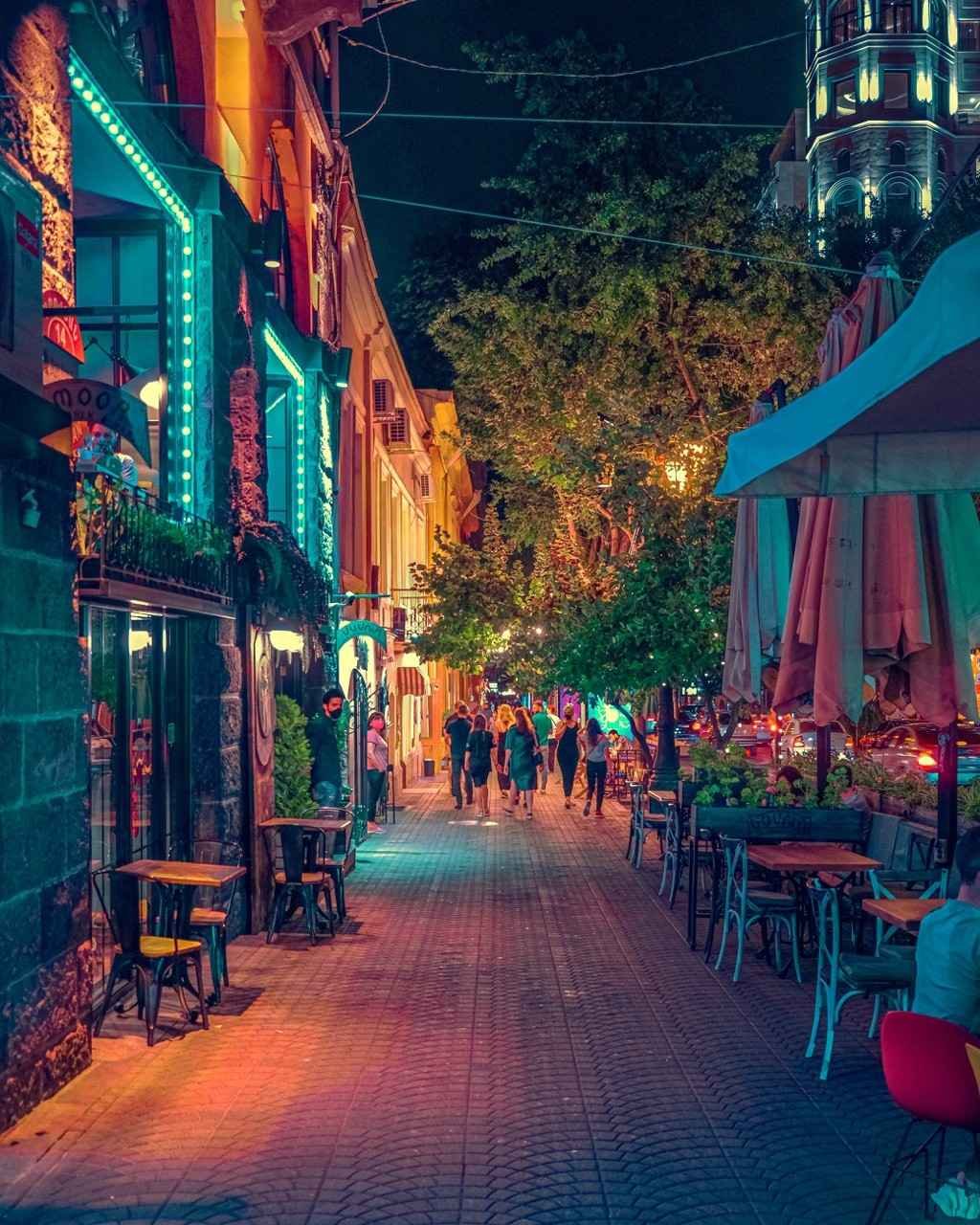
Get to Know the Armenian language and Armenian culture
The Armenian language is the official language of Armenia, and is spoken by an estimated 5 to 7 million people worldwide - among a diaspora spanning all six inhabited continents.
Though an Indo-European language, Armenian is the only member of its particular branch of the Indo-European family.
It also has its own writing system - the Armenian alphabet - created in 405 CE by Mesrop Mashtots. In the Armenian alphabet, ‘Armenian’ is written հայերեն (hayeren).
Why learn the Armenian language?
Yerevan, Armenia
Photo by Levon Vardanyan on Unsplash
Speakers :
5 to 7 million
Where :
Armenia, Iran, Azerbaijan, Georgia, Russia, Turkey, Kazakhstan, Uzbekistan, Turkmenistan, Iraq, Syria, Lebanon, Palestine, Egypt, Greece, Romania, Hungary, Ukraine, Belarus, Sweden, Germany, Belgium, France, Spain, Australia, Canada, the United States, Brazil, Uruguay, Argentina, Chile
Dialects :
Western Armenian and Eastern Armenian are the two standardised forms, but there were several dozen Armenian dialects prior to the Armenian genocide
Cover Image
Yerevan, Armenia
Photo by Gor Davtyan on Unsplash
Map
By GalaxMaps - Own work, CC BY-SA 4.0, https://commons.wikimedia.org/w/index.php?curid=94009912
Download the Ling app and start learning Armenian today! 🇦🇲
★★★★★
*Affiliate link : If you sign up for Ling Pro, I’ll earn a commission, at no extra cost to you. Ling is a resource I believe in!
Resources for learning the Armenian language
-

-

-

Videos
City of Yerevan : Easy Armenian 1 - Easy Languages
Ani Speaking Armenian - Wikitongues
Basic Armenian Phrases (Playlist) - Margarita Sargsyan
Vocabulary (Playlist) - Margarita Sargsyan
How to Write Armenian Letters (Playlist) - Learn Armenian with Comics
How to Greet People in Armenian - Learn Armenian with Hayasa
Personal Pronouns in Armenian - Learn Armenian with Hayasa
Numbers 1 to 10 in Armenian - Learn Armenian with Hayasa
Numbers 10 to 999 in Armenian - Learn Armenian with Hayasa
Small Talk in Armenian - Learn Armenian with Hayasa
Armenian Words and Expressions That You Should Know - Learn Armenian with Hayasa
How to Express Your Love in Armenian? - Learn Armenian with Hayasa
Colors in Armenian - Learn Armenian with Hayasa
Eastern and Western Armenian : Everything You Need to Know - Learn Armenian with Hayasa
Armenian for Real Life Situations - Learn Armenian with Hayasa
Days of the Week in Armenian - Learn Armenian with Hayasa
Languages in Armenian - Learn Armenian with Hayasa
Countries in Armenian - Learn Armenian with Hayasa
Russian Words in Eastern Armenian - Learn Armenian with Hayasa
Eastern Armenian Grammar Lessons (Playlist) - Learn Armenian with Hayasa
Greetings, Goodbyes and Self-Introductions - Learn Armenian with Mariam
Months and Seasons of the Year - Learn Armenian with Mariam
How to Be Polite in Armenian Culture - Learn Armenian with Mariam
Dos and Don’ts in Armenian Culture - Learn Armenian with Mariam
Basic Armenian Verb Conjugation - Learn Armenian with Mariam
An Armenian Easter Storytime From My Great-Grandfather’s Village - Learn Armenian with Mariam
Armenian Easter Traditions - Learn Armenian with Mariam
Best Apps for Learning Armenian Language - Learn Armenian with Mariam
-

-

Books
Learn to Read Armenian in 5 Days
by Alex Hakobyan
Conversational Armenian Quick and Easy
by Yatir Nitzany
Փոքրիկ իշխանը (The Little Prince in Armenian)
by Antoine de Saint-Exupéry
-

-

-

-

-
All of the resources mentioned on the website and in the How to Learn Languages guides are resources I believe in. They're resources I've either found useful learning languages, or have researched for the How to Learn Languages website and guides. The overwhelming majority of these resources are not affiliate links.
I only agree to affiliate links for resources I genuinely believe in. By having affiliate links for resources I believe in, I hope this can reduce the cost of paid resources for you, whilst also helping me to continue working on books, videos, documentaries, and How to Learn Languages.
This link to the Ling app is an affiliate link. I recommend Ling because they provide a fun and convenient way to start learning languages that are less frequently covered online. If you sign up to one of Ling’s paid plans using this link, I’ll earn a commission - at no extra cost to you.
If you buy certain books linked in How to Learn Languages guides, on my websites, or social media channels, I’ll earn a commission - at no extra cost to you - from Bookshop.org, whose fees support independent bookshops. Any books that aren’t available from Bookshop.org have been linked to their relevant page on Goodreads.
This italki link is also an affiliate link. If you pay for your first lesson on italki using this link, you’ll receive $10 italki credits, and I’ll earn a commission - at no extra cost to you.
Although the series aims to show anyone how to learn languages for free, it’s true that paid resources often help save time - both in terms of preparation and organisation. By having affiliate links for resources I believe in, I hope this can reduce the cost of paid resources for you, whilst also helping to make the development of more How to Learn Languages guides possible.
Regardless of whether you use the affiliate links, thank you so much for your support. I really appreciate it.
Contact
Do you make videos or resources for learning a specific language? Feel free to get in touch so I can add links to your work on the relevant Get to Know page for that language, or in the relevant How to Learn Languages guide.
As well as helping people to learn languages, encouraging linguistic diversity, and raising awareness for the rights of indigenous peoples, I hope How to Learn Languages will also help to grow the audiences of anyone creating resources for learning languages.



